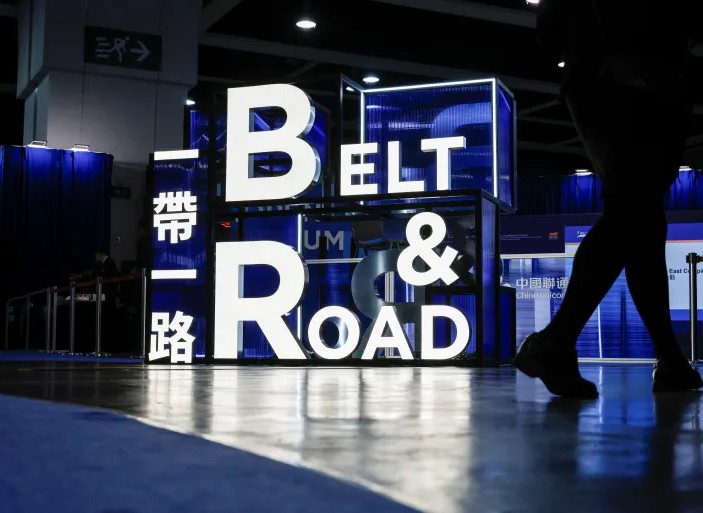The Belt and Road Initiative (BRI), which was initiated by the Chinese President Excellency Xi in 2013, is one of the most wide-ranging global development policies as outlined in the twenty-first century. Projected to be a modern adaptation of the ancient Silk Road, the project will increase the connectivity between the region by means of trading, investing in infrastructure, and funding the process. Over the twelve years of its existence, the BRI has established itself in over 150 countries in Asia, Africa, Europe, and Latin America, revolutionizing the international infrastructure landscape but at the same time creating a trend of interdependence resulting in much debate over the final aims and purposes of the BRI.
The achievements that were attained under the BRI are complicated by nature. On the one hand, the program has helped to overcome infrastructural shortcomings in the developing economies that have long been underserved by the Western or multilateral financial institutions. Countries like Pakistan, Sri Lanka and Ethiopia have recorded massive gains in the transport and energy sectors resulting in increased employment and growth of the macroeconomy. The Gwadar Port and the China-Pakistan Economic Corridor have placed Pakistan as a potential trading location, whereas the Addis Ababa-Djibouti Railway has made it easy to conduct business in East Africa. The financial resources and engineering skills made by China have played a key role in the implementation of these massive projects, most of which would have not been implemented without the external help of partner states.
But together with these achievements, there have also arisen the problems of financial stability and reliance on politics. The current pattern of finance, which is mostly Chinese loans, has raised the issue of so-called debt-trap diplomacy. A number of recipient states have been unable to repay their debts thus becoming more reliant to Beijing. A high profile case in point is the Hambantota Port in Sri Lanka where a 99-year lease was struck after the nation was unable to service its debts that had accumulated thus becoming the classic case of dependency. Like fears can be observed in Africa and Southeast Asia, where high interest borrowing, murkiness of contracts and the lack of local involvement are viewed as some sorts of concealed tools of inequality of power. Others also criticize that Chinese organizations often take up the role of construction and management, thus limiting the long-term independent growth of the host economies.
The BRI has a high level of heterogeneity in its economic impacts. Whilst the level of connectivity and inflows of investments have been improved in some countries, others are experiencing mounting debts and lack of diversification. Early optimism over the high rate of economic growth has in some cases been replaced with disappointment, where the cost of the project undertaken outstrips expected returns. The use of Chinese labor, materials and management practices has occasionally disadvantaged the local businesses and people. There are also environmental issues that have been raised since many BRI projects have been accused of failing to take into consideration environmental requirements in the name of rushed construction. These are challenges that should establish the need to align developmental ambitions to sustainable and inclusive development paradigms.
The BRI has transformed the world powers geopolitically. China has been strategic in positioning itself in different areas, however, by building ports, railways and digital corridors which act as economic and strategic purposes. The western powers and especially the United States and the European Union feel that the move is a channel of growing Chinese power at the cost of democracy and transparency. As a reaction, some counter-initiatives have been proposed, like Partnership for Global Infrastructure and Investment (PGII), led by the US, and Global Gateway, led by the EU, among which alternative financing models are offered. The competition between the two models indicates the changing multipolarity of international development cooperation.
However, it is not possible to rule the BRI strictly as an instrument of dependence. There are numerous partner countries who have been voluntarily involved in the initiative, which is seen as the opportunity to solve the infrastructural deficiency. Chinese loans, conditions notwithstanding have served as a life line to modernization of nations that are having limited access to the global capital markets. Further, China has been advocating a high-quality BRI since 2019, which focuses on environmental sustainability, digital innovation, as well as on people-to-people interactions. The Green Silk Road and Digital Silk Road are examples of how Beijing tried to correct the previous mistakes and make the program consistent with the global requirements today.
The next steps of the BRI depend on the realization of the ambitions and feasibility by aligning the goals with the sustainability at the threshold of the twelfth year of the initiative. In order to be a successful broker, China has to tackle some of the real issues on debt, transparency, and environmental responsibility.
Conclusion:
Belt and Road Initiative (BRI) now sits at a strategic-level nexus, as it has already achieved a lot in the area of infrastructural connectivity and international collaboration. Just sharing the gains and reasonable management of power will most probably define its long term heritage. Open and participatory governance in the DRI model can also bring a new globalization paradigm which is based on cooperative principles. On the other hand, the lack of effective mechanisms to reduce the debt accumulation and predatory profit motive is a threat of turning the initiative into the expression of geopolitical overextension. The initial twelve years of the BRI both reveal the prospects and the danger of the broad-mindedness of the Chinese vision. The initiative is not just a linking accelerator or a dependency engine, rather it is a combination of opportunity, ambition and caution. The BRI will either turn into an example of sustainable cooperation or becomes the symbol of geopolitical expansion over the next decade. The mandate of the international community therefore is not to resist the BRI, but transform it into something that is truly conducive to mutual development, an open mindedness among states and respect, thus seeing the original vision of the BRI to bring the world together as eliminating dependency and promoting collective prosperity.

Participant of ICSF-UoS Fellowship Program 2025-26 at University of Sargodha.














